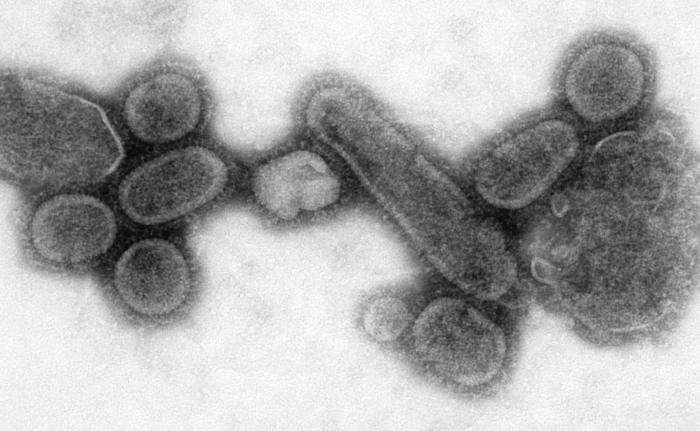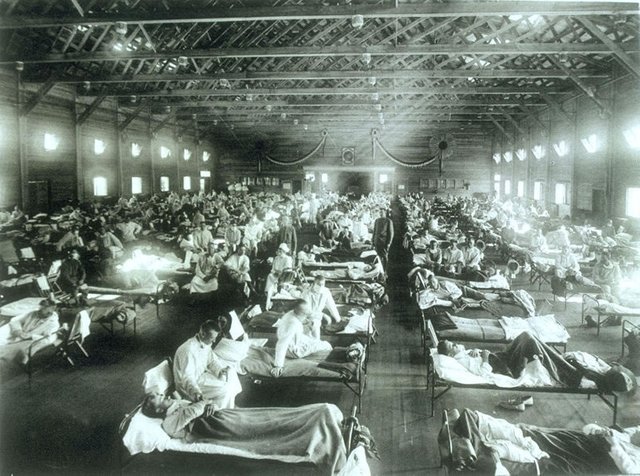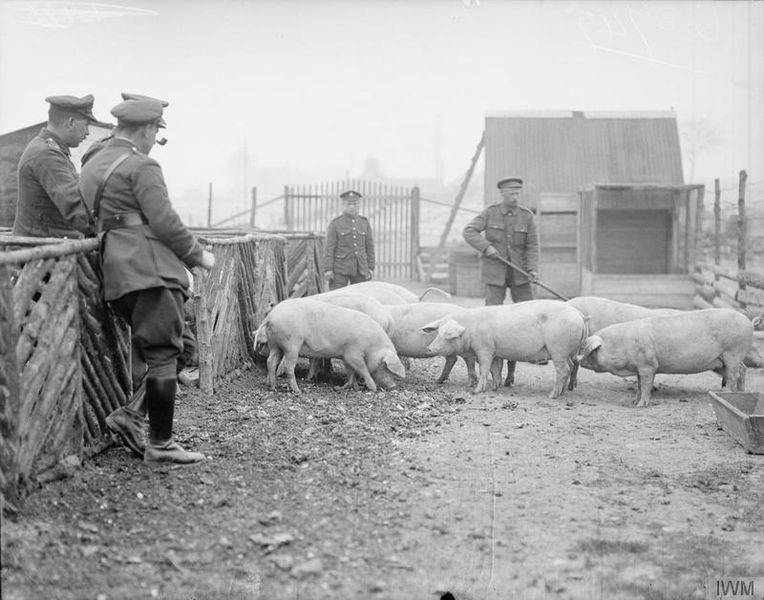From humble beginnings -- The 1918 flu pandemic's origin story

The great influenza pandemic of 1918 spared no country, gender, religious group, ethnicity, or age bracket. Millions perished quickly and violently. Metro areas worldwide faced months of lockdown – no school, no church, no funerals. In the isolated Samoan islands, over 20% of the population died during the final months of 1918. In tiny indigenous Alaskan villages, entire towns were wiped out overnight.
How did the fatal tendrils of influenza spread so far and wide? And where did it all begin?
As it turns out, the origin question’s answer depends on who you ask.
The American Account
According to a widely accepted perspective on the flu’s origin, a pancake-flat county in western Kansas marks the spot where it all began. American historian John Barry argues the story begins with an eccentric doctor named Loring Miner.
Beginning in 1885, Miner made a living by performing horse and buggy house calls to patients throughout dusty Haskell County. Work was routine and largely predictable.
But the early months of 1918, Miner witnessed an influenza outbreak unlike any he’d seen in his decades of practice.
Dozens of patients, separated by tens of miles, abruptly fell ill with a flu more intense and deadly than the typical seasonal variety. The healthy were dying – fast. Perturbed, Miner worked overtime, putting full energy into understanding and tamping down the outbreak. He reported it to the U.S. Public Health Service. He took copious notes and samples. He even spent the night at patients’ houses to provide the best care possible.
By March, the illness disappeared. The shroud of plague had lifted – and moved. About 300 miles east of Haskell County stood Camp Funston, a massive barracks for men drafted into WWI. Like Camp Ayers, which we visited in the previous episode, Funston had been furiously constructed in late 1917. Now, in March of 1918, it held over 50,000 troops waiting to be shipped to battles around the world.
On March 4th one of those troops fell ill. Another 1,100 were hospitalized over the next few weeks, with thousands more reporting to infirmaries for treatment. In the end, 48 died.

Some believe these outbreaks represent 1918 flu’s proverbial spark, a mild form ripe to be carried across the globe, infecting hundreds of thousands to millions. Over 30,000 Brits fell ill in June alone. By July, flu cases were reported in as far as Russia, China, India, and North Africa – the entire pandemic tracing back to a tumbleweed Kansan military base.
Researchers believe this initial flu wave was something of a seed – priming immune systems across the world to remember this flu and react aggressively to it. When the flu returned months or years later, that “memory” would be a death knell, sparking an immune response so extreme it killed the person instead of the flu.
The timing of the Camp Funston outbreak provides evidence that it was the spark that lit a fire of global death. One can follow the flu as it moved from Funston, to Boston, to France, to Britain, and beyond. Adherents to this theory believe it’s no coincidence that the flu outbreak corresponded to a massive influx of American troops to Europe.
But another major theory exists, and it begins across the pond…
The British Hypothesis
Months before Loring Miner encountered acute, deadly influenza in Haskell County, British military doctors were dealing with a strikingly similar affliction.
The British army operated a massive camp in Etaples, France during World War I. At over 100,000 soldiers, it was twice the size of Camp Funston. And in the winter of 1916, it encountered an even deadlier influenza than the Funston outbreak – in Etaples, the mortality rate was 25-40%.
The illness caused widespread reports of what was known as “heliotrope cyanosis” – a blue discoloration of the skin caused by lack of oxygen. In 1918, that particular symptom would be seen thousands of times across the globe, especially as the deadliest influenza wave descended beginning in September.
The Etaples base was characterized by rapid turnover of its residents. It’s estimated over a million troops passed through the camp between 1916 and 1918. As in the Funston theory, those who were infected but didn’t grow ill then spread the illness worldwide, laying the seed for the deadly outbreak in late 1918.
The strongest evidence for the Etaples theory is circumstantial. Symptoms of the outbreak in 1916, never confirmed to be influenza, are conspicuously similar to the symptoms of the 1918 flu. And the base in Etaples featured a potent mix – humans, animals, and chemical gasses known to cause DNA mutations.
 )
) In fact, both theories identify poor sanitation in close proximity to animal life as a fundamental cornerstone of the flu outbreak. But what do animals have to do with this deadly virus? The next episode will discuss the science of infectious influenza, and how animals likely played a vital role turning a seasonal sickness into a global killer.
This is the third part of a series on the 1918 influenza pandemic; Read Episode 1 and 2.
This is a test comment, notify @kryzsec on discord if there are any errors please.
Being A SteemStem Member
Very well done, nice pics. What do you think of Gina Kolata's book on the issue?
https://www.amazon.com/Flu-Influenza-Pandemic-Search-Caused/dp/0743203984
while we spend time complaining about our body's resistance to antibiotics, we forget about the horrors of the past. out of sight, out of mind.
we are lucky to live in 2018!
On a personal note, i avoid antibiotics at all costs (used only once in my life) because I think their prescription is more often than not ill-advised. Still happy we have solution to stop things like the 1918 influenza pandemic.
Thanks @warrensz for dropping some historical knowledge, the platform can use people who talk about thing other than crypto.
Interesting facts Incredible postingKeep it up
Glad you enjoyed, thank you!
This post has received a 4.66 % upvote from @aksdwi thanks to: @warrensz.
This post has received a 38.35% UpGoat from @shares. Send at least 0.1 SBD to @shares with a post link in the memo field.
Invest your Steem Power and help minnow at the same time to support our daily curation initiative. Delegate Steem Power (SP) to @shares by clicking one of the following links: 1000 SP, 5000 SP or more. Join us at https://steemchat.com/ discord chat.
Support my owner. Please vote @Yehey as Witness - simply click and vote.